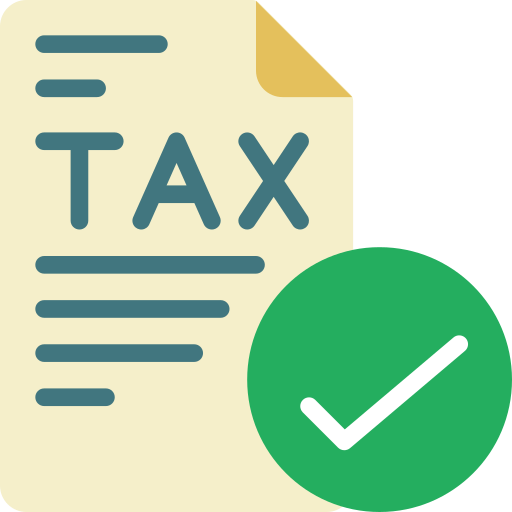Stay compliant, avoid fines, and reap the benefits with on-time GST submissions

Ensure that you avoid late fees, penalties, and interest charges that could accumulate for non-compliance.

Late filings can result in the suspension or cancellation of GST registration, which can disrupt your business activities.

Help your business remain eligible for government contracts which require up-to-date tax filings.opportunities.

Help you retain more capital, which can be reinvested in the business, improving cash flow.

Simplify the process in case of audits and reduce the chances of disputes with the tax authorities.

Ensure that the refund process is smooth and free from unnecessary delays, improving cash flows.
GST filing made effortless—follow our simple steps for quick results!

Speak to Our GST Experts
Organize and Update Your Invoices

GST Calculation and Review
Make GST Liability Payment
GST Return Timely Submission
Stay ahead—have these essential documents ready for smooth GST returns

Explore how government initiatives make GST filing easier, faster, and more efficient for businesses of all sizes






Get familiar with the types of GSTR returns to ensure timely and accurate GST submissions
| Return Type | Description | Due Date | Frequency | Applicable Period |
|---|---|---|---|---|
| GSTR-1 | Outward supplies of taxable goods/services | 11th of the following month | Monthly/Quarterly (under QRMP) | FY 2025-26 |
| GSTR-2A | Auto-drafted details of inward supplies | N/A (View only) | Real-time | FY 2025-26 |
| GSTR-3B | Summary return for payment of tax | 20th of the following month or 22nd/24th (for QRMP) | Monthly/Quarterly | FY 2025-26 |
| GSTR-4 | Return for Composition Scheme taxpayers | 30th April of the following financial year | Annual | FY 2025-26 |
| GSTR-5 | Return for Non-Resident taxable persons | 13th of the following month or within 7 days after registration expiry. | Monthly | FY 2025-26 |
| GSTR-6 | Return for Input Service Distributors (ISD) | 13th of the following month | Monthly | FY 2025-26 |
| GSTR-7 | Return for Tax Deducted at Source (TDS) | 10th of the following month | Monthly | FY 2025-26 |
| GSTR-8 | Return for Tax Collected at Source (TCS) by e-commerce operators | 10th of the following month | Monthly | FY 2025-26 |
| GSTR-9 | Annual return for regular taxpayers | 31st December of the following financial year | Annual | FY 2025-26 |
| GSTR-9C | Reconciliation statement for taxpayers with annual turnover above ₹5 crore | 31st December of the following financial year | Annual | FY 2025-26 |
| GSTR-10 | Final return upon cancellation of GST registration | Within 3 months of cancellation date | One-time | FY 2025-26 |
| GSTR-11 | Return for persons with Unique Identity Number (UIN) claiming refund | 28th of the following month | Monthly | FY 2025-26 |
Learn how filing mistakes can lead to penalties, interest, and legal complications that affect your compliance status

Late GSTR filing incurs ₹50/day (₹25 each for CGST, SGST) or IGST, capped at ₹5,000, plus 18% annual interest on unpaid taxes.

Delayed or incorrect GSTR-1 can block ITC claims and disrupt supply chains, affecting cash flow for both sellers and buyers.

Non-filing of GST returns for 6 months may lead to registration cancellation, halting tax operations and disrupting business continuity.
Incorrect returns or underreported GST attract 18% interest on the unpaid amount until cleared.

Incorrect filings can trigger a Show Cause Notice or tax evasion charges, leading to penalties, fines, or even prosecution for willful negligence.

Non-compliance with GST can disqualify businesses from government tenders requiring up-to-date filings.
Count on Startup Movers for effortless foreign subsidiary registration!
10+ years of experience with 80+ experts guiding you every step of the way.
All-inclusive pricing with no hidden fees.
Get your GST Returns filed efficiently and on time
From documents to compliance, we handle it all.
Join a large community of successful businesses.
We’ve helped startups grow into billion-dollar businesses.
Discover why businesses love working with Startup Movers!

Really happy with the professional way in which the work has been done (y). Worked with other CA’s previously, Startup movers were the best one- whom we worked with

Excellent service at affordable prices. They are very punctual and work really hard to get the job done.

These guys are really good particularly their secretarial part. Very professional very prompt.

Excellent!!…. Excellent!..
Startup Movers helped us with our
company incorporation & re-correction was done quickly and everything that goes with it has done
good.

The best part about working with StartUp Movers is that they understand the DNA of a startup very well, and are flexible in their approach. This makes them very compatible partners for any start-up.

I have had great experience with Shivani. Right now the only structured department in my organisation is Finance, grateful to the team of startup movers.

These guys are very professional and perfect in their areas of expertise. They know their customers’ pain point very well. From company registration to compliances, they have delivered the best. For an early stage startup, these guys act as a “Virtual CFO”.

Working with the Startup Movers team has been extremely great in all aspects. These guys are the best at the best affordable prices in the market.

We wanted to setup employee benefit plans such as ESOP for our startup and startup movers team were the perfect fit to do those policy drafting and helping with the correct statutory filing. They have framed the policy as a perfect fit for our requirement and in very timely manner.

Since the start of my entrepreneurship journey, Start-up Movers have been managing our Secretarial Compliance (including fundraising compliances), and financial compliance (such as GST, TDS, PF/ ESI, PT) The team has been phenomenal. They are well-versed with all MCA rules and regulations.
Need answers? Browse our FAQs for quick guidance!
Exemptions apply to specific categories like casual taxable persons, non-resident taxable persons, and certain service providers.
Additionally, taxpayers with a turnover below Rs. 2 crore may be exempt from filing GSTR-9
Yes, it is mandatory for every registered GST taxpayer to file GST returns, including nil returns, even if there are no transactions during the period.
The purpose is to maintain compliance with GST regulations. Failing to file nil returns can lead to penalties and, if continued for an extended period, may result in the cancellation of GST registration
Missing the due date for GST return filing attracts penalties and late fees.
It is crucial to file your returns within the specified timelines to avoid additional charges
Yes, if there is an error in your GST return, you can rectify it by filing an amendment. This must be done within the period allowed by the GST rules
No, you don't need a Chartered Accountant (CA) for GST filing. You can file GST returns yourself if your transactions are simple.
However, for businesses with complex transactions or larger turnovers, it's advisable to consult a CA to ensure accurate filing and avoid penalties
To check your GST return filing status, log in to the official GST portal at https://www.gst.gov.in/ Go to Services > Returns > Track Return Status.
You can check the status using your ARN (Application Reference Number), return filing period, or the status of the filed return

